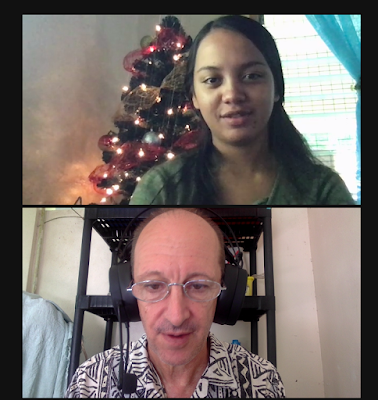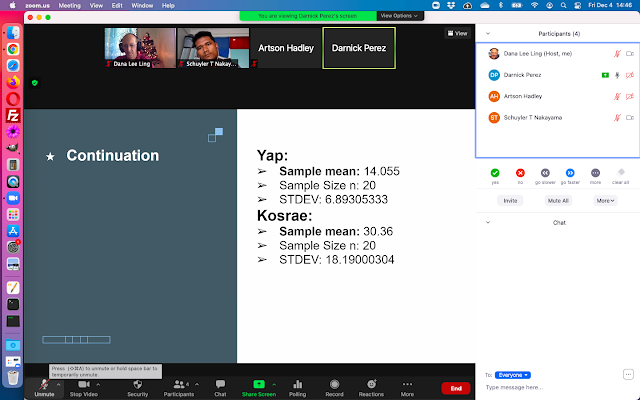In the residential version of MS 150 Statistics the course wraps up with open data explorations. In this the course is guided by the 2007 Guidelines for Assessment and Instruction in Statistics Education (GAISE), the spring 2016 draft GAISE update, and the ongoing effort at the college to incorporate authentic assessment in courses. A history of the evolution open data open data exploration exercises and associated presentations as authentic assessment in the course was covered in a May 2017 report.
The students worked in pairs to produce a presentation in Google Sheets which the pair then presented to the class in the classroom. With the class moving online in the fall of 2020, the course shifted to individually worked on data and presentations submitted only as Google Sheets assignments. The students did not present their work to anyone, they only submitted the presentation. Except for the last presentation. For the last presentation I asked the students to present the presentation over Zoom using an open Zoom room. For the most part students presented without other students in attendance.
Shanalin gets ready to present
Prior to the Zoom presentations in the final full week of class, there were two Wednesdays during which students could practice logging on and practice screen sharing. Many students had been on the receiving end of Zoom, none of those who presented had been on the delivering side of Zoom. None of the students who presented had ever shared a screen or given a presentation over Zoom - a basic competency on the planet earth this pandemic year in business, education, and the sciences.
Shanalin screen shares her presentation
Of the 43 students in two sections, only 10 students chose to present during the two day presentation window (23% of the students). The Zoom room, run on a drop in basis to allow for power outages and Internet access issues, was open from 9:00 to 11:30 and 1:00 to 3:30 on a Wednesday and again on the following Friday. On Wednesday one single student presented at 9:00 sharp. No other student presented on Wednesday. In the future Wednesday should probably be a third practice day for logging in.
Iverson screen shares his presentation
On Friday the other nine students delivered presentations over Zoom. Note that 17 students submitted the assignment as a presentation (40%), with ten of the 17 going on to present over Zoom. Submission rates for this last assignment were depressed against submission rates earlier in the term. This suggests that one possibility might have been term end overload for the students.
Without delving into the nature of ths assignments there is no way to know the exact nature of the assignments. If the load is a series of lighter assignments that would different from if the load includes some major term end project. There are signs that loads may have been heavy for some students in that final week, especially in the second section of the course.
Tatyana gives her presentation, Iverson listened in
Other reasons for the low rate of participation in the Zoom presentations are not known, although according to a convenience sample survey the students are not fond of teleconferencing for learning material.

Students dominantly prefer videos as a way to learn material. Presentations are a second mode of preferred learning. Videoconferencing and the textbook are a distant third and fourth, with very few students using textbooks. I realize that there is a hue and cry among faculty lamenting student unwillingness to read textbooks. I am also reminded that Aristotle and Socrates never instructed their students to study their textbook. Modes of learning change over time as the technologies to store and convey information change. I would note too that videotaping oneself lecturing in front of a whiteboard or on a tablet misuses the capabilities of video technology. Videos free one from the whiteboard, chalkboard, and digital drawing tablets that mimic whiteboards. Videos allow a whole new approach, just as textbooks changed the way information could be conveyed from the methods that worked in oral exposition of a topic.
Darnick presents, Artson and Schuyler listen in
I watch the youth of the present college generation use videos for all sorts of informal learning outside of the classroom. Today's youth turns to YouTube for information, not the Britannica. Yet that does not mean they are comfortable presenting via video links, an actual skill they will need in the workplace.
The Zoom presentations, although fewer than I had hoped for, went well and improved interactivity. Spring term will see more use of Zoom and presenting via video linkages as this approach appeared to benefit those students who participated.











Comments
Post a Comment